On the occasion of World Book and Copyright Day, “Spring Feast: A Dialogue between Chinese Characters and Futurism,” a multi-sensory artwork by life aesthetics and cross-cultural creative platform InCulture, was unveiled in Shanghai.
Presented in the forms of a lecture (“Charm of Characters”), an exhibition (“History of Characters”), and a banquet (“Spring Feast”), the event gathered a host of experts, scholars, artists and designers of calligraphy and Chinese characters and employed cutting-edge technological means, such as 3D printing and Augmented Reality, to showcase the profound meaning and future development of Chinese characters.
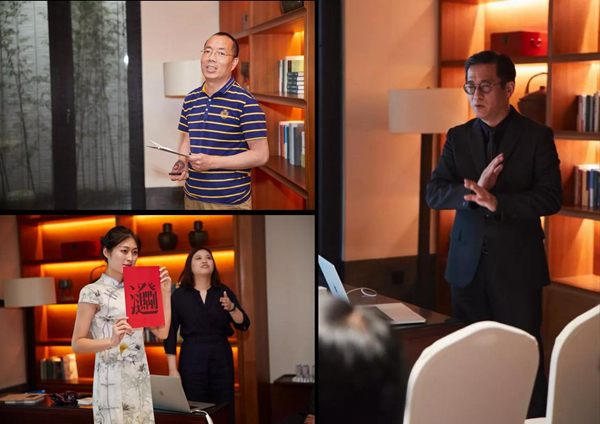
In “Charm of Characters,” Chen Genyuan (a connoisseur of cultural relics and research fellow at Xi’an Forest of Stone Steles* Museum) Lin Guoqing (Council President of Taiwan Art Design Association and founder of cultural and creative brand More Fun) and Co-Word (a young team of character designers) showcased both the origin of Chinese characters and how to creatively flip and combine characters, thus illustrating to the audience the historical and artistic connotations of Chinese characters and their continued vitality.
In “History of Characters,” besides showcasing ancient and classic Chinese books, Zhang Jie (a flower installation artist from Shaanxi Huaxia Culture and Creation Company) together with Co-Word, Chennan Studio, RayPai Technology, Matrix Electronic and many other organizations displayed contemporary methods of expression in interactive installations, 3D printing and creative flipping.
Throughout the exhibition, Kaicheng Stone Inscription and the classic editions of gold and silver tea sets collected by Famen Temple displayed the origin of Chinese culture. Kaicheng Stone Inscription, as the first classic relic of Chinese culture, is the best-preserved stone scripture in Chinese history. The title is written in ancient Chinese clerical script and the content in regular script which reflects a typical style of calligraphy used during the Tang Dynasty (618–907). The Tang Dynasty tea sets collected by Famen Temple are the oldest surviving, most complete and exquisite tea sets constituting the highest specification in the world. They signify the highest level of tea culture in the Tang Dynasty and represent the royal tea ceremony and tea drinking in that period. According to historical records, from the Tang to Qing Dynasty, tea was so valuable that people in southern Shaanxi bartered tea for horses. During the Tang Dynasty, tea leaves were exported to the world along the Silk Road, which explains why the Silk Road is also called the Silk and Tea Road.
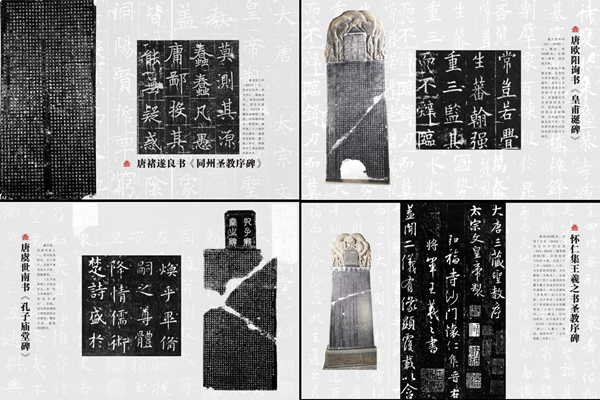
Stone steles and ink rubbings collected by Xi’an Forest of Stone Steles Museum
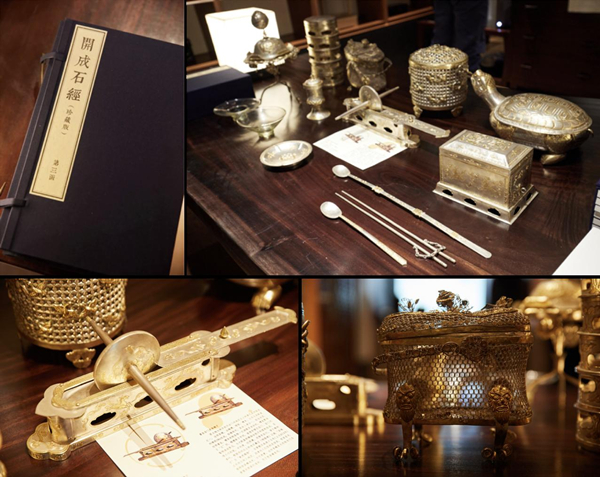
Script of Kaicheng Stone Inscription and tea sets collected by Famen Temple
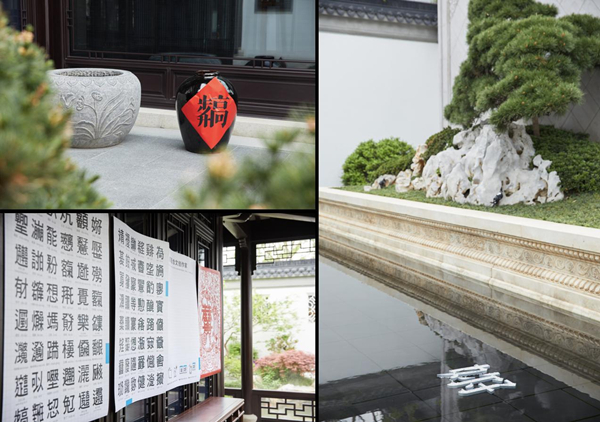
Using flowers, fossils, garden rocks and 3D printed structures, artist Zhang Jie completed a piece of work called “Another Story: A dialogue with the Future.”
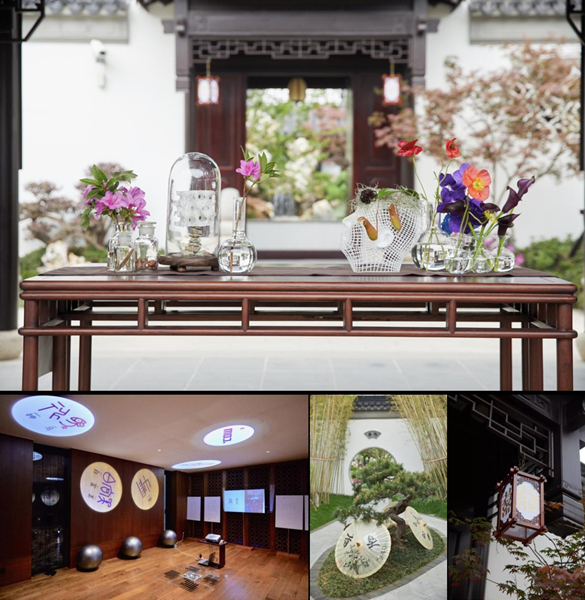
Other installations combining mirror images, character combinations, and other innovative designs and artistic techniques were created and displayed at the event venue, allowing the audience to discover the highest beauty of characters during their visit.
The Future Library houses InCulture’s collection of characters written by different generations as well as different language versions of “future” written by artists from nearly ten countries. The exhibits were shown in the way of image installations, triggering the audience to think about the intervention of science and technology in the evolution of Chinese characters.
In “Spring Feast,” to offer a literal taste of characters, InCulture worked with Urban Harvest to create six creative dishes, each inspired from a Chinese character and reflecting the evolution of Chinese characters and people. Integrating multiple fashion design elements, the feast expressed imagination about the future of Chinese characters by deconstructing them into multiple levels.
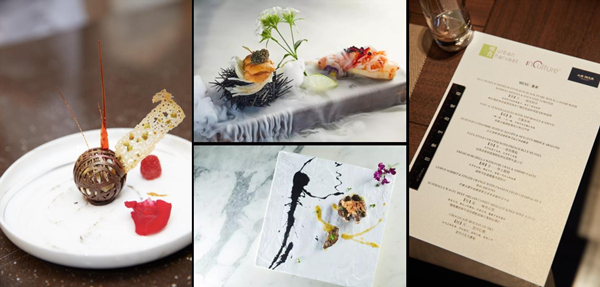
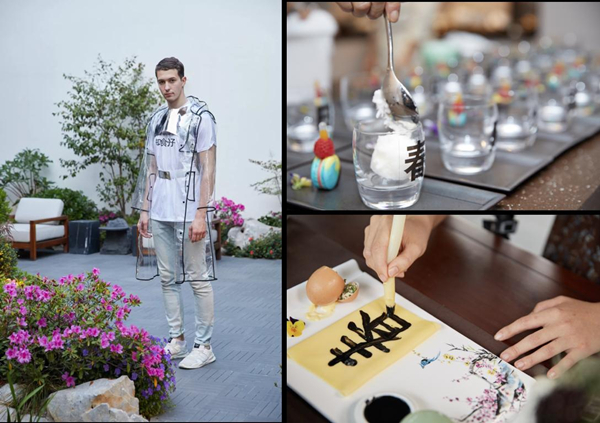
The event was the first artistic showcase in Tao Hua Yuan Dream House, a garden-style human habitat model in Shanghai. Assembling the essence of oriental aesthetics, Tao Hua Yuan displayed multi-dimensional life scenarios while reviving the beauty of Chinese gardens and guiding the visitors to a fairyland far from the outside world.
In 2018, InCulture will cooperate with a number of international art and cultural organizations to roll out a series of crossover creative performances and art festivals themed around Chinese characters.
*A stele is a stone slab or pillar.
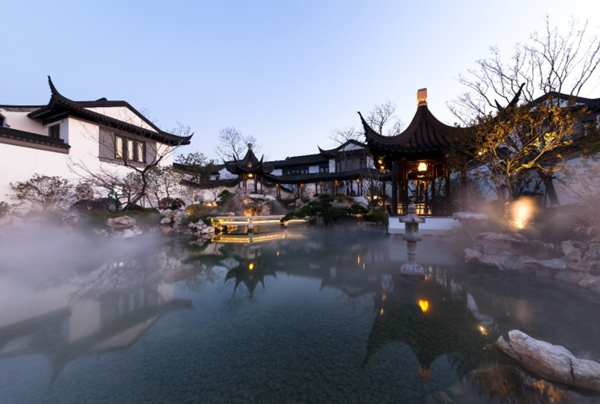
(Tao Hua Yuan Dream House in Shanghai)
